Story Update:
In the first half of the joint EDAB/P&Z workshop held on August 15, WRT consultant, Silvia Vargas, explained her study of Winter Park’s Comprehensive Plan and Land Development Code — and the numerous changes the study proposes.The City-commissioned study summarizes the purpose of the Comp Plan and Land Development Code (LDC) this way: “If the comprehensive plan is, essentially, the ‘what we want to do’ of the community, the LDC is the ‘how we are going to do it.’” Details of the study are published in the 8/15/13 Voice story that follows this update. Images below show some of the close-in commercial properties permitted and developed under the current Comp Plan and LDC.Orange County Development Codes : A Model for Winter Park Development?
The WRT study is seen by some city residents as laying the groundwork for elimination of City regulations that serve as a check on developer over-reach in the City. Others see the study’s recommendations as a road map to streamlining City codes that they believe are hindering economic development.
Peter Gottfried, a member of the City’s Planning and Zoning Board, illustrated the latter view by pointing out the development strategy pursued by developer Dan Bellows, who obtained less-restrictive building approvals in Orange County before having his Ravaudage development annexed into Winter Park: “The perfect example of that is a developer who decides to go develop a large piece of property and decides to go through the Orange County development approval process rather than go through the Winter Park process – and that’s Dan Bellows’ project at Lee Road.” Mr. Gottfried appeared to compare Winter Park’s approval process unfavorably with Orange County’s process, flatly stating: “. . . I think Orange County provides a fair and equitable [ process ] – even though you might not like their rules . . . I think as we move forward we need to decide how we’re going . . . to tackle revising some of these things that need to be revised . . .” (Video, Part 2 – 16:15)Another view of the contrast between Orange County and Winter Park development regulations is illustrated in an analysis written by P&Z board member, Pete Weldon – also a proponent of regulatory overhaul in the City. In his analysis of Ravaudage development (obtained by the Voice in a public records search), Mr. Weldon concludes that Orange County development regulations enabled Mr. Bellows to potentially build out Ravaudage at significantly higher density, “. . . Having accepted the terms of the annexation that include operating under Orange County codes and entitlements . . . the city approved Ravaudage densities somewhere in the range of 50-100% more favorable for the developer than would have been available under city code.” Mr. Weldon’s analysis can be viewed by clicking the button below. Weldon Ravaudage Analysis An increase in allowed building density as noted above is among the most hotly debated issues whenever significant changes to Winter Park’s land development regulations are proposed.Other regulatory policies – like the City’s “Conditional Use” standards that allow certain kinds of development if prescribed conditions are met and approved – were questioned during the hearing. EDAB board member, Steve Flanagan, criticized the standard saying, “. . . as a ‘recovering’ developer, I have to tell you it scares the living daylights out of me every time I think of it – because as a developer, you come into a community hoping that you can understand the rules and that if you obey them, you can get your project done.” (Video, Part 2 – 11:20)Mr. Flanagan also questioned use of Floor Area Ratio (FAR) standards – particularly in the Fairbanks corridor – asserting that development is “stymied” by current FAR regulations that limit bigger buildings on limited-size parcels.
Will High-Density Buildings Reduce “Sprawl” and Lower Residential Property Taxes?
Mr. Flanagan and others on the panel implied that allowing more in-fill development of larger and/or more numerous commercial buildings confers important benefits on the city that include prevention of “sprawl” and an increase in the City’s commercial tax base. (Video, Part 2 – 10:00)
Ms. Vargas appeared to question the use of sprawl as a rationale for higher density development, pointing out that “It’s just kind of difficult to talk about sprawl in a community that is mature, developed and land-locked the way that Winter Park is.” Vargas did agree that the sprawl rationale might be more appropriately applied to parking in Winter Park’s major corridors – an apparent reference to construction of “land-efficient” parking structures. (Video, Part 2 – 14:25)
Consultant: Purpose of Regulations is to “Provide Predictability” for Developers and Keep Factories Out of Neighborhoods.
In response to questions about “Conditional Use” policy, Ms. Vargas stated: “I understand the nature of the Conditional Use . . . there need to be parameters . . . the whole purpose of your future land use map and your zoning map is to provide predictability – not just for the developer, but also for the residents – for someone who’s going to buy a house and can be assured that across the street there’s not going to be . . . a factory.” (Video, Part 2 – 14:53)
Conditional Use is a mechanism that has been used by the City to regulate the approval of businesses seeking to locate here. One example of this use is regulation of what types of businesses can locate on the Park Avenue.
P&Z Board Member Johnston: Are We Scrutinizing Rollins College Development Plans?
New P&Z Board member, Ross Johnston, asked Ms. Vargas about her view of the “public-private relationship” vis-à-vis education – considering Ms. Vargas’ prediction of 5,000+ new residents being added to Winter Park’s population in coming years. Mr. Johnston also asked Ms. Vargas whether she has analyzed the city’s interaction with Rollins College, pointing to the college’s interest in developing “. . . big chunks of land going to softball fields and lacrosse fields across different parts of the town now.” (Video, Part 2 – 8:30)
Ms. Vargas admitted that she did not look closely at the Rollins/Winter Park relationship, but did say that she recommends keeping education “concurrency” in City codes – a policy that that ties future development to increases in the City’s educational resources.
Toward the end of the workshop, the discussion turned toward questions of process – how the City plans to proceed in its review of the Comp Plan and LDC. Chamber of Commerce CEO, Patrick Chapin noted the phrases and characterizations used in the WRT study: “In Conflict”, “Highly Unusual”, “Contradictory”, “Onerous” and pressed the panel to consider the process: “I want to understand how this process – when this Comp Plan was developed – what was the mechanism? What was the plan? Did a group sit around the table like this?” (Video, Part 2 – 17:10)
P&Z Members Gottfried & Sacha: We Need Independent Facilitator to Get This Done Right.
Peter Gottfried responded with a brief history lesson – telling stories of past conflict, a Comp Plan committee being fired and a generally disjointed process. Mr. Chapin asked whether an arbitrator was used. Gottfried replied that the prior Comp Plan committees did not use the services of a professional facilitator, then pointed to Ms. Vargas as a person who could fulfill that role: “I think that’s what we have right here. I think that’s going to be a real value as we move forward . . .” Gottfried expressed confidence that Ms. Vargas could help keep the process “consistent” and “legal . . . I think that’s what we need.” (Video, Part 2 – 19:55)
After hearing expressions of support from the board for ongoing mediation, Ms. Vargas laid out her view of how the process could be effectively – and responsively – managed: “I very strongly believe that the community vision process is important . . . It doesn’t work for every community – not every community needs it – but, it seems to me that this community does.” Ms. Vargas acknowledged Mr. Gottfried’s statements concerning problems with past negotiations and offered a plan for a community-based process where “. . . the whole community could bring their opinion about the future – the aspirations for Winter Park twenty years from now, their concerns.” Ms. Vargas advocated a “consensus process whereby perhaps, not everybody agrees on every idea – but everybody agrees that at the end, these are things that are good for the whole community.” (Video, Part 2 – 20:25)
Following Ms. Vargas’ comments, P&Z board member, Tom Sacha, spoke up saying he “totally agreed” with Ms. Vargas’ approach, adding that Ms. Vargas could ”. . . bring [ the process ] to common ground . . . and facilitate us to where we need to be, going forward.” (Video, Part 2 – 21:40)
Consultant Vargas: We Need Lots of Public Input.
EDAB Member Caron Suggests “Smaller Group with Vision, Versus a Consensus-Type of Approach.”
Several other board members shared a mix of opinions, including remarks by Peter Gottfried – who referenced Winter Park’s political landscape: “You learn when you deal in the political world that there’s five Commissioners – or four Commissioners and the Mayor. You learn to count to three . . . that’s the reality of it.” (Video, Part 2 – 22:55)
EDAB member, John Caron, offered an opinion somewhat at odds with Ms. Vargas’ “public input” model – asking Vargas: “You have stated that ‘Vision is lacking’ . . . Who authors the vision? Where does that come from? . . . My sense is that usually it’s a smaller group with vision, versus a consensus-type of approach.” (Video, Part 2 – 23:20)
In response, Ms. Vargas reiterated her view that the City should ”. . . go to the community first – and we go to them repeatedly until we get it right . . .” Ms. Vargas countered Mr. Caron’s view with the assertion that “. . . when you have that vision that becomes the cornerstone of the plan – that comes from the residents . . . you are able to take the politics out of it, because this is the vision of the citizens.” (Video, Part 2 – 24:00)
As Ms. Vargas ended her statement, Dori Stone, Director of Planning & Community Development, stepped to the podium to wrap up the workshop. Ms. Stone spoke about her plan for advancing the WRT study through the City review process: “We are going to complete this study with Silvia’s recommendations.” Stone assured board members that they would have the opportunity to review and recommend changes to the Comp Plan and Land Development Code. (Video, Part 2 – 25:00)
Director Stone promised one public board hearing that would be part of an overall review process that will be finally decided by the City Commission. Ms. Stone estimated that the process could take as long as three months to complete.
Peter Gottfried asked Stone to consider allowing the boards to make more substantial recommendations – putting “more meat on the bones” – before the study is presented to the Commission. P&Z Board Chair, James Johnston, differed with Mr. Gottfried, arguing that the study already gets “the point across” – the point being that “There’s some inconsistency – there’s some problems – there’s some things that could be a hindrance on development . . . I think this report shows that.” (Video, Part 2 – 29:15)
P&Z Chair James Johnston: Current Regulations “Could be a Hindrance on Development.”
Gottfried: “Residents are going to say ‘What do you mean we have a hindrance to development?’ … We’ve got a lot of construction going on . . .”
Gottfried disagreed with Johnston’s characterization of the report stating that “If the premise of this thing is that there’s a hindrance to development – all you’ve got to [ do ] is look around [ in ] the city of Winter Park. We’ve got a lot of construction going on and . . . people, residents are going to say ‘What do you mean we have a hindrance to development?’ I think we have to be careful how we say that.” (Video, Part 2 – 31:00)
Patrick Chapin quickly jumped in supporting Gottfried’s point: “I really disagree with ‘the hindrance of development’.“ Instead, Chapin suggested his interpretation of the study’s message as promoting the “economic well-being” of the community.
As Dori Stone offered her final remarks and ended the meeting, it was unclear whether she intends to implement Silvia Vargas’ suggestion that the City should”. . . go to the community first – and we go to them repeatedly until we get it right . . .” Ms. Stone offered to include public and board comments sent to her via email at dstone@cityofwinterpark.org in her presentation to the Commission.
Consultant Vargas: We Need to Get Community Opinion and ”. . . go to them repeatedly until we get it right . . .”
EDAB/P&Z Director Dori Stone: “The City Commission will decide what the next steps will be regarding this project . . .”
We contacted Ms. Stone in the days after the workshop attempting to learn more about her interest in using Ms. Vargas as a continuing independent facilitator as suggested by some board members – and whether she will schedule – or ask city officials to authorize – multiple public meetings as suggested by Ms. Vargas.
Ms. Stone would not speak directly with the Voice, but ultimately did respond to multiple requests for comment. Her written responses are excerpted below:
In response to our question asking how the city plans to use Ms. Vargas’ services from this point forward — and/or whether there are any plans for significant facilitation by a person who is not a city employee, Ms. Stone responded:
“The scope of work associated with the contract with WRT included the preparation of and presentation of a review and evaluation of the Comprehensive Plan and LDC. Any new work that the City Commission may wish to pursue based on the recommendations in the study is outside the scope of this contract. Should the City Commission direct staff to implement any of the recommendations and staff decides consultant services may be needed, we would begin the appropriate process in creating a new scope of work for the required tasks, request Commission approval and follow the City’s process for hiring consultant services. This will be a decision of the City Commission and any recommendations by staff would be premature at this time.”
In response to our question asking how Ms. Stone sees the review process moving forward – and whether she is planning multiple public “visioning” sessions that would give Winter Park residents the opportunity to offer input on changes to the city’s Comp Plan and related development codes, Ms. Stone responded:
“At this point in time, the report with recommendations will be presented to the City Commission. The evaluation of the Comprehensive Plan and LDC substantially completes the scope of work outlined in the contract with WRT. The consultant intends to finalize the report prior to the City Commission presentation. Implementation of this study is not included in the scope of work and would need City Commission approval and direction.”
In response to our follow-up questions asking for clarification of her initial response, Ms. Stone responded:
“I have asked the City Manager to bring up the concept of a workshop to discuss the findings of the study. That is the remaining public meeting regarding this contract. The City Commission will decide what the next steps will be regarding this project . . . I have not formulated a staff recommendation to the City Commission yet regarding the next steps. I’m waiting to hear what direction the City Commission gives staff about the report.”
Winter Park Voice will update this story and provide continuing coverage of related hearings.
|
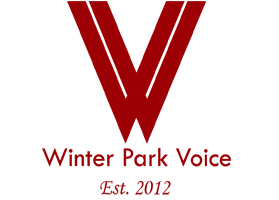
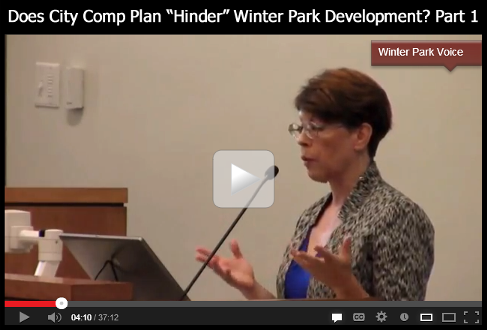
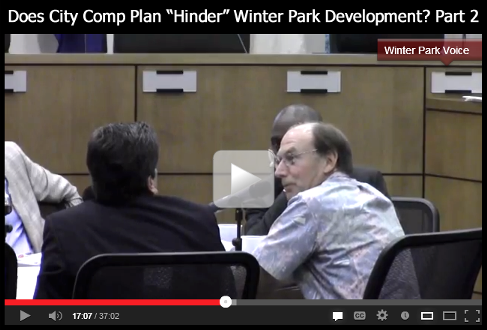
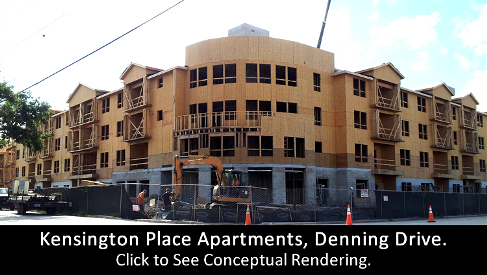
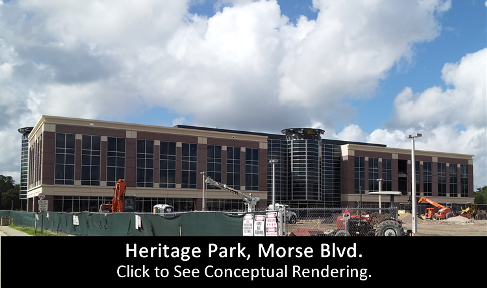
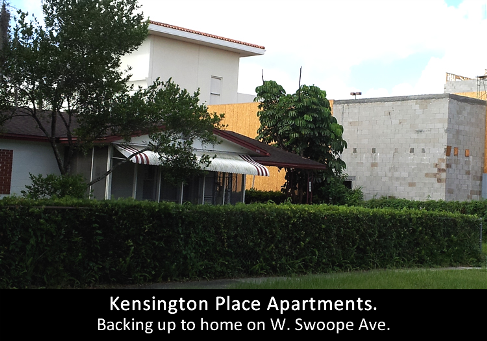
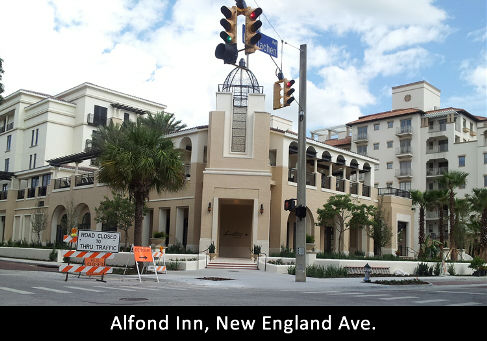
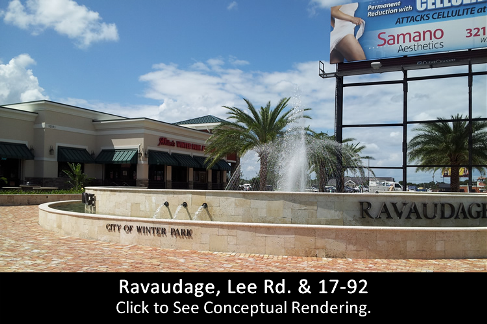
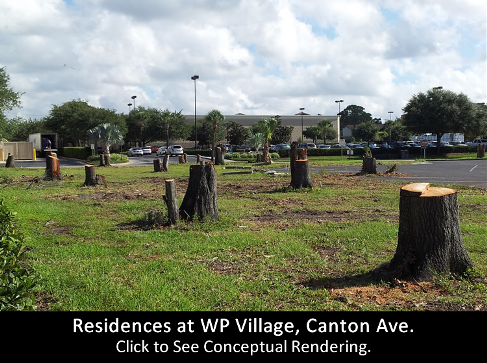
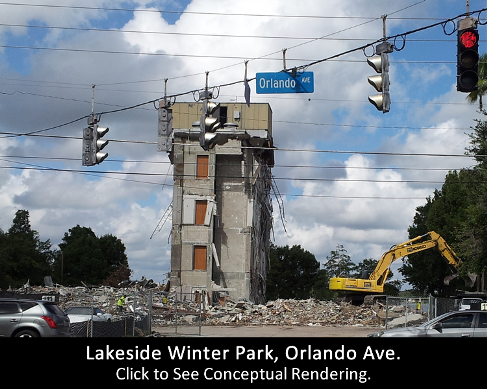
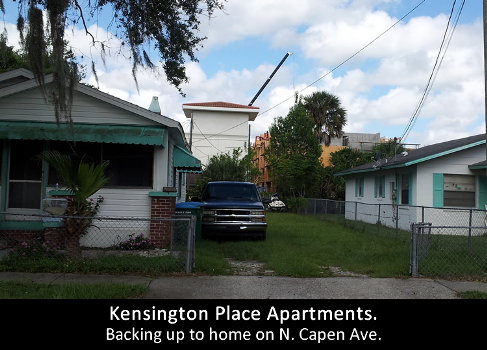
Recent Comments